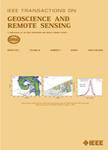版权所有:内蒙古大学图书馆 技术提供:维普资讯• 智图
内蒙古自治区呼和浩特市赛罕区大学西街235号 邮编: 010021

作者机构:Wuhan Univ Sch Remote Sensing & Informat Engn Wuhan 430072 Peoples R China Tencent Amer Tencent Media Lab Palo Alto CA 94306 USA
出 版 物:《IEEE TRANSACTIONS ON GEOSCIENCE AND REMOTE SENSING》 (IEEE Trans Geosci Remote Sens)
年 卷 期:2024年第62卷
页 面:1页
核心收录:
学科分类:0808[工学-电气工程] 1002[医学-临床医学] 08[工学] 0708[理学-地球物理学] 0816[工学-测绘科学与技术]
基 金:National Natural Science Foundation of China Tencent
主 题:Image coding Remote sensing Semantic segmentation Feature extraction Contrastive learning Object segmentation Transform coding Standards Codecs Bit rate image coding for machines (ICMs) remote sensing interpretation semantic segmentation
摘 要:Due to the huge data volume of high-resolution remote sensing imagery (RSI) and limited transmission bandwidth, RSIs are typically compressed for efficient transmission and storage. However, most of the existing compression algorithms are developed based on optimizing for the human perceptual that are not suitable for remote sensing image applications where RSIs are usually used for machine interpretation tasks, such as semantic segmentation for ground-object recognition. In this article, we propose an image coding for machines (ICMs) paradigm based on contrastive learning in a fully supervised manner to boost semantic segmentation of compressed RSIs. Specifically, we build an end-to-end compression framework to make full use of the global semantic information by clustering intracategory projected embeddings and spacing intercategory embeddings apart, to compensate for the loss of feature discriminability during the compression process and reconstruct the decision boundaries between different categories. Compared to the state-of-the-art image compression methods, our proposed method significantly improves the performance of semantic segmentation on the remote sensing labeling benchmark datasets.